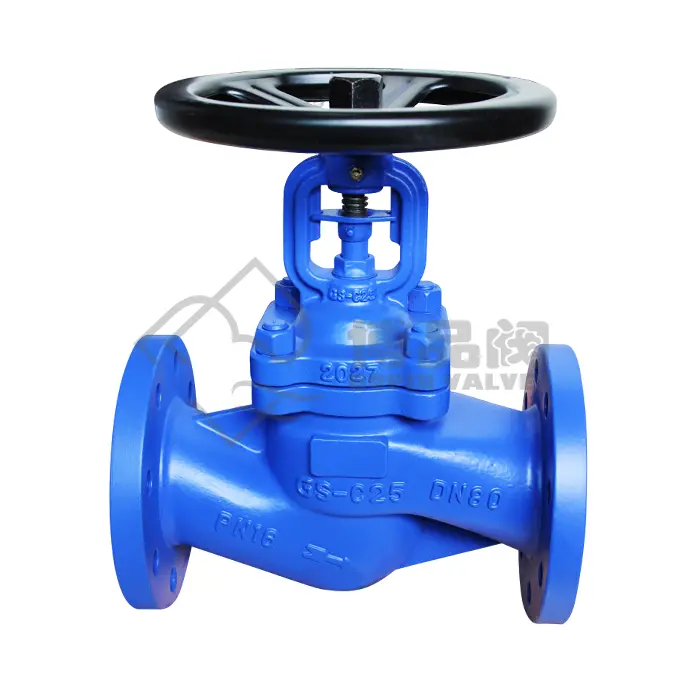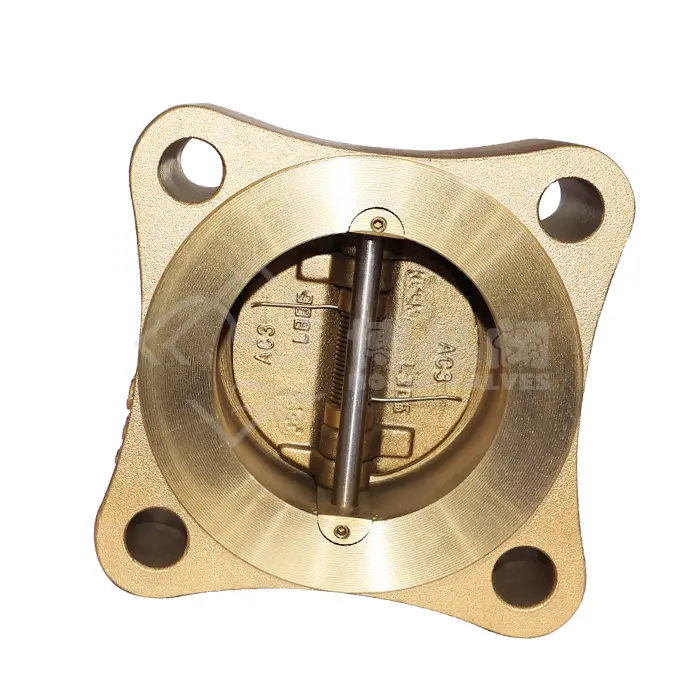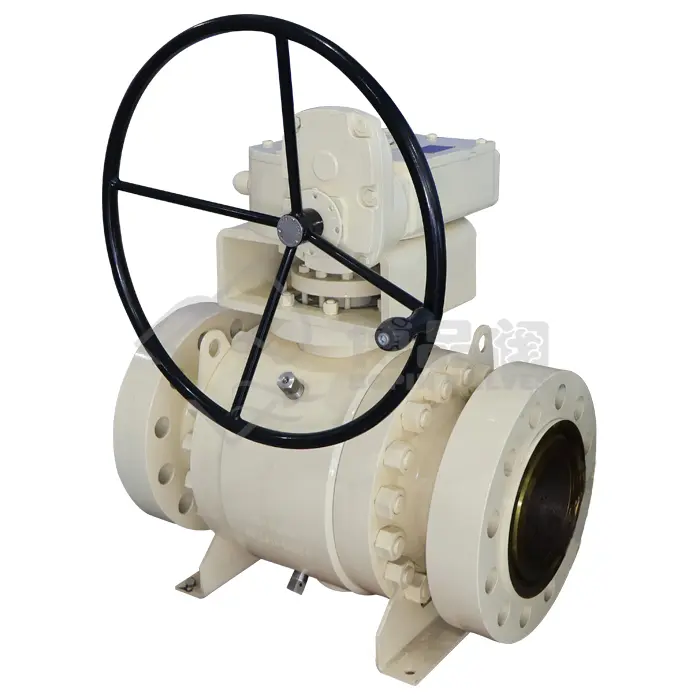0102030405
API 600 ASTM A890 5A Duplex Stainless Steel Wedged Gate Valve
Compliance with API 600 Standard
API 600 is the American Petroleum Institute’s specification that defines the design, materials, testing, and inspection requirements for steel gate valves, bolted bonnet type, with flanged or butt-weld ends. Key points from API 600 relevant to this valve include:
Design Pressure-Temperature Ratings in line with ASME B16.34.
Face-to-Face Dimensions conforming to ASME B16.10.
Flange End Connections per ASME B16.5 (for sizes up to 24") or ASME B16.47 (for larger sizes).
Minimum Wall Thickness Requirements to ensure durability and safety margins.
Mandatory Non-Destructive Examination (NDE) on critical welds and castings.
Shell, Seat, and Backseat Testing to verify integrity and leak tightness.
These requirements ensure that the API 600 duplex stainless steel wedged gate valve is dimensionally compatible, safe, and dependable for industrial service.
Material of ASTM A890 Grade 5A Duplex Stainless Steel
The valve body, bonnet, and gate are manufactured from ASTM A890 Grade 5A (UNS J93404), a high-alloy duplex stainless steel with approximately 25% chromium, 7% nickel, 4% molybdenum, and 0.25% nitrogen. Duplex stainless steel offers:
Dual-Phase Microstructure: Combines ferritic and austenitic phases, yielding higher strength than standard austenitic stainless steels.
Excellent Corrosion Resistance: Particularly against chloride stress corrosion cracking (SCC), pitting, and crevice corrosion.
High Strength-to-Weight Ratio: Allows thinner sections without compromising pressure containment.
Superior Wear Resistance: Extends service life in abrasive or erosive applications.
Good Weldability: Compatible with proper welding procedures for installation and repair.
ASTM A890 5A is especially suitable for aggressive seawater, chemical processing, and offshore oil and gas environments.
Design and Construction Features
The wedged gate valve design provides reliable shut-off by lowering a solid wedge-shaped gate between two seat rings. Key construction details include:
1 Body and Bonnet
Cast Duplex Stainless Steel body for maximum corrosion resistance and mechanical integrity.
Bolted Bonnet Connection for secure sealing and easy maintenance access.
Pressure Sealing in accordance with API 600 and ASME B16.34 ratings.
Cast Duplex Stainless Steel body for maximum corrosion resistance and mechanical integrity.
Bolted Bonnet Connection for secure sealing and easy maintenance access.
Pressure Sealing in accordance with API 600 and ASME B16.34 ratings.
2 Gate (Wedge)
Solid Wedge type for strength and resistance to thermal distortion.
Precision Machined Seating Surfaces for tight metal-to-metal sealing.
Designed for bi-directional sealing capability.
Solid Wedge type for strength and resistance to thermal distortion.
Precision Machined Seating Surfaces for tight metal-to-metal sealing.
Designed for bi-directional sealing capability.
3 Stem
Integral Forged Stem from duplex stainless steel for high tensile strength.
Rising Stem Design for clear visual position indication.
ACME Thread Form for smooth operation under high loads.
Integral Forged Stem from duplex stainless steel for high tensile strength.
Rising Stem Design for clear visual position indication.
ACME Thread Form for smooth operation under high loads.
4 Seats
Renewable, Hardfaced Seat Rings to resist erosion and galling.
Seat rings welded or threaded into the body depending on size and service.
Renewable, Hardfaced Seat Rings to resist erosion and galling.
Seat rings welded or threaded into the body depending on size and service.
5 Gland and Packing
Live-Loaded Packing with PTFE, graphite, or other high-performance materials.
Adjustable Gland Follower for effective sealing with minimal maintenance.
Live-Loaded Packing with PTFE, graphite, or other high-performance materials.
Adjustable Gland Follower for effective sealing with minimal maintenance.
6 Yoke and Handwheel/Actuation
Rigid Yoke Structure for precise stem alignment.
Available with manual handwheel, gear operator, electric actuator, or pneumatic actuator for automation.
Rigid Yoke Structure for precise stem alignment.
Available with manual handwheel, gear operator, electric actuator, or pneumatic actuator for automation.
Pressure and Temperature Ratings
The pressure-temperature rating of an ASTM A890 5A duplex stainless steel wedged gate valve is determined by the ASME B16.34 standard for Group 3 materials. Typical values:
Class Ratings:
150, 300, 600, 900, and higher upon request.
Temperature Range:
–46°C (–50°F) to approximately 316°C (600°F), depending on pressure class.
Pressure Resistance:
Up to 15 MPa (2200 psi) for higher classes.
Duplex stainless steel retains strength at elevated temperatures and maintains toughness at subzero temperatures, making it versatile for varied operating environments.
Performance Characteristics
FLow Pressure Drop: Straight-through flow path minimizes turbulence and energy loss.
Zero Leakage Shut-off: Metal-to-metal seal and precision machining ensure tight closure.
Resistance to Vibration and Cavitation: Robust construction prevents damage in turbulent flows.
Cycle Life: Suitable for infrequent on/off operation in process lines.
Applications
Forged steel lift type check valves are widely used in industries requiring backflow prevention under high-pressure conditions. Some key applications include:
Oil & Gas Industry
Offshore platforms and subsea installations.
Sour gas and high-chloride production fluids.
Marine & Shipbuilding
Ballast water systems, seawater cooling, and fire mains.
Chemical & Petrochemical Plants
Chloride-rich process fluids, acidic or caustic service.
Desalination Plants
High-pressure reverse osmosis systems and seawater intake lines.
Pulp & Paper Industry
Bleaching processes involving chloride compounds.
Power Generation
Condenser cooling water circuits in coastal plants.
Testing and Inspection
To ensure compliance with API 600 and ASTM A890 standards, each valve undergoes rigorous quality control:
Visual and Dimensional Inspection per ASME B16.10 and API 600.
Non-Destructive Testing (NDT) including radiography, dye penetrant, and magnetic particle examination.
Hydrostatic Shell Test to verify body strength at 1.5 × rated pressure.
Seat Leakage Test with water or air at API-defined pressure differentials.
Backseat Test to ensure stem seal integrity during packing replacement.
Maintenance and Service Life
Duplex stainless steel offers a longer service interval compared to carbon steel or lower-grade stainless steels. Maintenance guidelines include:
Periodic Operation to prevent sticking in seldom-used valves.
Packing Adjustment to control stem leakage.
Seat Surface Inspection during shutdowns.
Lubrication of stem threads for smooth operation.
With proper installation and care, service life can exceed 20 years in typical industrial use.
Advantages Summary
API 600 Compliance ensures dimensional and operational reliability.
ASTM A890 5A Duplex Stainless Steel offers exceptional corrosion resistance and strength.
Wedged Gate Design provides tight shut-off for both flow directions.
Long Service Life with minimal maintenance.
Versatile Applications across harsh marine, chemical, and energy sectors.



















